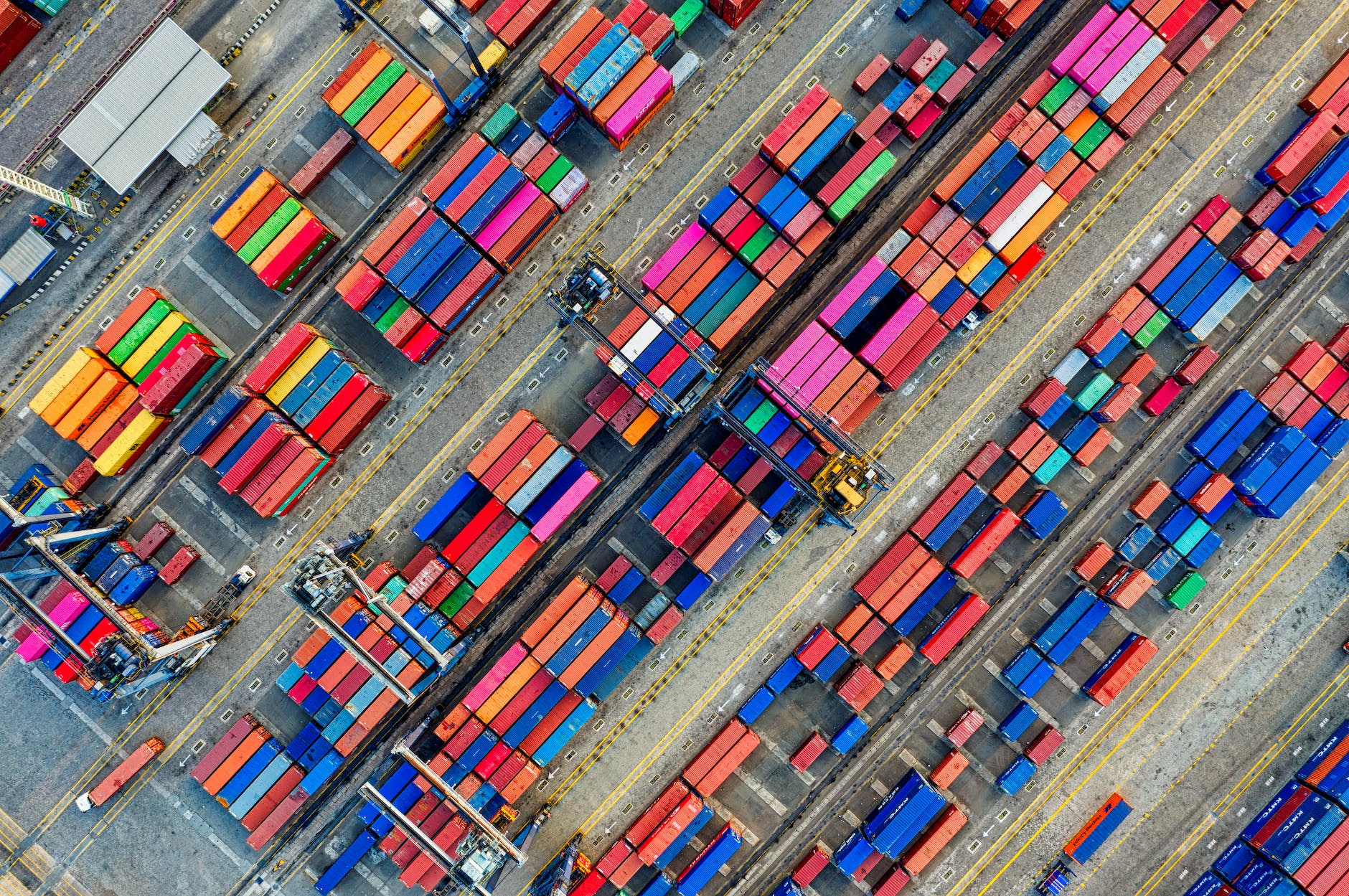In today’s rapidly evolving world, the need for sustainable business practices has become increasingly apparent. As companies strive to reduce their environmental impact, a new type of insurance has emerged to address the unique risks associated with such endeavors. Green Liability Insurance is playing a crucial role in safeguarding businesses against potential environmental liability and financial losses. By providing coverage for environmental damage, pollution, and cleanup costs, this specialized insurance offers peace of mind to environmentally conscious businesses and enables them to operate responsibly without fear of unexpected expenses. In this article, we will explore the significance of Green Liability Insurance and its role in supporting a sustainable business landscape.
Understanding Green Liability Insurance
Definition of Green Liability Insurance
Green liability insurance refers to a specialized form of insurance coverage designed to protect businesses and organizations from the financial risks associated with environmental damages or claims. It provides protection against liabilities arising from pollution, environmental damage, and non-compliance with environmental regulations. This type of insurance coverage is crucial for businesses operating in sectors that have a significant environmental impact.
History and Development of Green Liability Insurance
The concept of green liability insurance emerged in response to growing concerns about environmental degradation and the need for businesses to mitigate their environmental risks. The insurance industry recognized the need to provide coverage for environmental liabilities, leading to the development of specialized green liability insurance products. Over the years, the coverage has evolved to address the changing regulatory landscape and increasing environmental awareness.
The Necessity of Green Liability Insurance for Business
The Role of Green Liability Insurance in Risk Management
Green liability insurance plays a vital role in managing the risks associated with environmental liabilities. By transferring the financial burden of environmental claims to the insurance provider, businesses can protect their assets and ensure their financial stability. This coverage helps businesses mitigate risks and meet their legal obligations related to environmental protection.
Illustrative Case Studies
To understand the importance of green liability insurance, let’s examine a few illustrative case studies. In one case, a manufacturing company was found responsible for contaminating a nearby river with hazardous substances. The resulting clean-up costs and legal fees amounted to millions of dollars, which would have financially devastated the company if it didn’t have green liability insurance. Another case involved a construction company facing legal action due to improper disposal of construction waste, leading to soil contamination. The existence of green liability insurance helped the company cover the costs of legal defense and environmental remediation.
The Importance in Various Business Sectors
Green liability insurance is essential for businesses across various sectors, including manufacturing, energy production, construction, transportation, and agriculture. These industries often face significant environmental risks, such as pollution, hazardous waste handling, and potential accidents with long-lasting environmental impacts. Having green liability insurance coverage provides businesses in these sectors with financial protection and peace of mind, enabling them to focus on their operations while staying compliant with environmental regulations.
Environmental Regulations and Green Liability Insurance
Domestic Environmental Regulations Impacting Businesses
Domestic environmental regulations specifically address the environmental responsibilities of businesses. These regulations vary from country to country and state to state, but they generally impose obligations on businesses to prevent pollution, protect natural resources, and follow specific environmental management practices. Green liability insurance helps businesses comply with these regulations by providing coverage for potential liabilities arising from non-compliance.
International Environmental Laws and Agreements
In addition to domestic regulations, businesses must also consider international environmental laws and agreements. These frameworks aim to address global environmental challenges, such as climate change, biodiversity loss, and the protection of natural resources. Green liability insurance helps businesses navigate the complexities of international environmental laws by providing coverage for liabilities arising from international operations and cross-border activities that may impact the environment.
Compliance with Green Liability Insurance
To ensure compliance with green liability insurance, businesses must carefully review the terms and conditions of their insurance policies. It is important to understand the scope of coverage, exclusions, and obligations to report potential environmental claims. Implementing effective risk management practices and maintaining proper documentation of environmental compliance measures will help businesses demonstrate their commitment to environmental stewardship and ensure compliance with their green liability insurance policies.
The Framework of Green Liability Insurance Policies
Key Components of a Green Insurance Policy
A green liability insurance policy typically includes several key components. These components may include coverage for third-party bodily injury and property damage caused by pollution events, coverage for the costs of environmental cleanup and remediation, and coverage for legal fees and defense costs. Some policies also provide coverage for business interruption losses resulting from environmental damages. The specific coverage elements can vary based on the industry and the requirements of the insured business.
Understanding Coverage Limits
Coverage limits refer to the maximum amount of money an insurance policy will pay for a covered loss. Understanding the coverage limits of a green liability insurance policy is crucial to adequately protect a business. Businesses must carefully assess their potential environmental liabilities and choose coverage limits that align with their risk exposure. Insurance providers can work with businesses to determine appropriate coverage levels based on factors such as industry standards, regulatory requirements, and potential financial impact.
Extensions Available in Green Liability Insurance
Green liability insurance policies may offer various extensions or additional coverage options. These extensions can enhance protection by covering specific risks or expanding the coverage limits. Some common extensions available in green liability insurance include coverage for gradual pollution events, transportation-related pollution, and contingent bodily injury and property damage. Additional extensions may also be available to address emerging environmental risks or unique challenges faced by specific industries.
Types of Green Liability Insurance
Pollution Legal Liability Insurance
Pollution Legal Liability Insurance is a type of green liability insurance that specifically covers the liabilities and costs associated with pollution events. It provides coverage for third-party bodily injury, property damage, and environmental cleanup and remediation costs resulting from pollution events. This type of insurance is crucial for industries that involve handling hazardous materials or have the potential for accidental releases that could cause pollution.
Green Building and Sustainable Design Practices Liability
Green Building and Sustainable Design Practices Liability insurance is designed to protect businesses involved in green building and sustainable design practices. It provides coverage for liabilities arising from construction defects, design errors, and failure to meet sustainable building standards. This type of insurance supports the development of environmentally-friendly buildings and helps mitigate risks associated with sustainable construction projects.
Weather Derivative Insurance
Weather Derivative Insurance is a unique type of green liability insurance that provides coverage for businesses affected by weather-related risks, such as crop failures due to extreme weather events or revenue losses caused by unexpected weather patterns. This coverage helps businesses in sectors such as agriculture, tourism, and renewable energy manage the financial risks associated with unpredictable weather conditions.
The Process of Obtaining Green Liability Insurance
Eligibility and Application Process
To obtain green liability insurance, businesses must go through an eligibility and application process. Insurance providers will assess the business’s environmental risks, compliance history, and risk management practices to determine eligibility for coverage. The application process generally involves providing detailed information about the business’s operations, environmental management protocols, and financial information. Insurers may also request site assessments or interviews to better understand the business’s risk exposure.
Choosing a Reliable Insurer
Selecting a reliable insurer is crucial when obtaining green liability insurance. Businesses should look for insurers with experience and expertise in the field of environmental insurance. Working with an established insurer with a solid track record ensures that businesses will receive comprehensive coverage, reliable claim handling, and ongoing support. Businesses should also consider the insurer’s financial stability and reputation within the insurance industry before making a decision.
Understanding the Cost of Premiums
The cost of green liability insurance premiums can vary depending on various factors. Insurers consider the industry sector, the size of the business, the risk exposure, and the extent of coverage when determining the premium amount. Businesses must accurately assess their environmental risks and implement effective risk management practices to demonstrate their commitment to environmental stewardship. By minimizing potential liabilities and risks, businesses can potentially negotiate lower premiums and obtain cost-effective green liability insurance coverage.
Claiming Green Liability Insurance
Circumstances Leading to a Claim
A green liability insurance claim may arise from various circumstances, such as pollution events, environmental damages caused by the insured business’s operations, or legal action alleging non-compliance with environmental regulations. In these situations, businesses may face significant financial liabilities and legal expenses. Green liability insurance provides protection by covering the costs associated with environmental remediation, legal defense, and potential financial settlements or judgments.
Steps to Lodge a Claim
To lodge a green liability insurance claim, businesses should promptly notify their insurance provider as soon as they become aware of a potential claim. The insurance provider will guide the insured business through the claim process, which typically involves submitting documentation related to the claim, such as incident reports, environmental assessments, and legal documents. It is crucial to provide all necessary information accurately and thoroughly to ensure a smooth and efficient claim process.
Factors Affecting the Claim Process
Several factors can influence the claim process for green liability insurance. The complexity of the claim, the availability of supporting evidence, and the cooperation between the insured business and the insurance provider can impact the speed and outcome of the claim process. Businesses that maintain proper documentation of environmental compliance measures and promptly report potential claims can help facilitate a faster and more favorable claims resolution.
Role of Green Liability Insurance in Sustainable Development
Incentives for Adopting Environmentally-Friendly Practices
Green liability insurance serves as an incentive for businesses to adopt environmentally-friendly practices. By providing financial protection against environmental liabilities, it encourages businesses to implement risk management practices, invest in sustainable technologies, and prioritize environmental stewardship. Green liability insurance rewards businesses for their commitment to sustainability and helps drive the adoption of environmentally-friendly practices across industries.
Supporting the Green Transition in Business
As businesses strive to transition to more sustainable practices, green liability insurance plays a crucial role in supporting this transition. It provides businesses with the confidence to invest in sustainable technologies, develop environmentally-friendly processes, and explore innovative solutions to mitigate their environmental impacts. By offering financial security and risk mitigation, green liability insurance enables businesses to embrace sustainable development and contribute to a greener, more resilient future.
How Green Liability Insurance Promotes Corporate Sustainability
Green liability insurance promotes corporate sustainability by aligning the financial interests of businesses with their environmental responsibilities. It encourages businesses to proactively manage their environmental risks, minimize their environmental footprint, and comply with environmental regulations. By integrating sustainability into their operations and decision-making processes, businesses can enhance their reputation, attract environmentally-conscious stakeholders, and contribute to a more sustainable society.
Future Trends in Green Liability Insurance
Impact of Climate Change on Green Liability Insurance
The increasing risks and uncertainties associated with climate change are expected to have a significant impact on the future of green liability insurance. As extreme weather events become more frequent and concerning, businesses will face higher risks of environmental damages and associated liabilities. Insurers will need to adapt their coverage offerings, risk assessment methodologies, and pricing models to account for these changing environmental conditions and associated risks.
Innovation and Technologies Influencing Green Liability Insurance
The development and adoption of innovative technologies are transforming the landscape of green liability insurance. Advanced data analytics, remote sensing technologies, and satellite imagery can improve risk assessment and underwriting processes, enabling insurers to offer more accurate coverage and pricing. Additionally, emerging technologies, such as blockchain and smart contracts, may streamline claims processing and improve transparency within the insurance industry.
Possible Changes in Regulatory Landscape
The regulatory landscape related to environmental protection is continually evolving. As governments worldwide strengthen their environmental regulations, businesses will face increased pressure to comply with stricter standards and ensure adequate financial protection against potential liabilities. This changing regulatory environment may lead to adjustments in green liability insurance requirements and coverage offerings to align with emerging regulatory expectations and industry best practices.
Challenges and Criticisms of Green Liability Insurance
Financial Constraints in Implementation
One of the challenges of green liability insurance is the potential financial burden it may impose on businesses, especially small and medium-sized enterprises (SMEs). Premium costs may be perceived as high, deterring some businesses from obtaining adequate coverage. It is essential for insurers, businesses, and policymakers to work together to develop cost-effective solutions that enable SMEs to access green liability insurance and manage their environmental risks.
Lack of Awareness and Understanding
Many businesses may lack awareness and understanding of the benefits and importance of green liability insurance. This lack of awareness could prevent businesses from taking proactive measures to manage their environmental risks and obtain the necessary coverage. Raising awareness about the significance of green liability insurance, its role in risk management, and its potential cost-saving benefits is crucial to encourage broader adoption across industries.
Critiques of Greenwashing in the Insurance Industry
Critics argue that some insurance providers may engage in greenwashing, wherein they misleadingly market their products as environmentally-friendly without genuinely considering environmental impacts. This practice can undermine the credibility of green liability insurance and hinder businesses’ trust in their insurance providers. Industry-wide standards and certifications can help combat greenwashing and ensure that insurers offer legitimate green liability insurance products that effectively address environmental risks.
In conclusion, green liability insurance is a crucial tool for businesses to manage and mitigate their environmental risks. It provides financial protection and encourages the adoption of sustainable practices. Understanding the different types of green liability insurance, compliance with environmental regulations, and the claim process is important for businesses to make informed decisions and ensure effective risk management. As the world continues to prioritize environmental protection and sustainability, green liability insurance will play an increasingly vital role in supporting businesses’ transition to a greener future.



